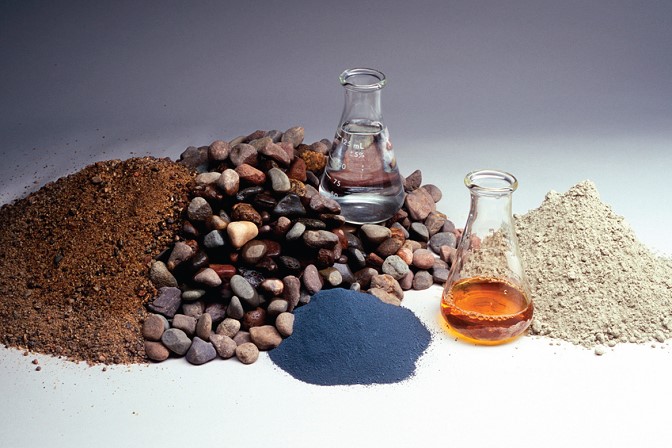Posted on November 24, 2021
Merge the words “concrete” and “graphene,” and you get “concretene.” This newer building material also merges something very old with something very new. Concrete has been around for thousands of years. Graphene was first discovered in 2004.
A 4,000 year old monument and a brand new concrete slab are but a few miles apart. Stonehenge is a collection of huge sarsen stones and smaller bluestones. The slab was just poured in 2021. It is made of graphene concrete.
American Scientist asserts that, “Graphene is a perfect anomaly in the world of chemistry.” It consists of flat, two-dimensional molecules made up of carbon atoms neatly arranged in hexagons. This makes graphene look a little like chicken wire, albeit a whole lot stronger!
Indeed, graphene is a super-strong, yet lightweight material. It is stronger than Kevlar or steel, with a tensile strength surpassing 150 million PSI. You could cover a football field with a single sheet weighing less than a gram.
It is simple to mix in graphene additives at concrete plants. This should accelerate acceptance once graphene supplies are both sufficient and cost-effective. At present, this miracle material remains difficult to mass produce.

Benefits of Graphene Concrete
Fortunately, even tiny quantities enhance the strength of concrete. Why does graphene make such a difference? First, it acts as a mechanical support. Second, it acts as a catalyst during initial hydration. This improves bonding at the microscopic level. To use graphene concrete, existing placement systems do not need modification. There is no need for new training or equipment.
As a result, graphene enhances concrete’s durability, strength, impermeability and corrosion resistance. Together, these qualities lower concrete’s carbon footprint. At the same time, they give architects and engineers exciting new design possibilities
Graphene’s two-dimensional carbon latticework imparts impressive strength gains. Concretene is approximately 30% stronger than regular RC30 concrete. The stronger a construction material is, the less of it you need for a given application. As a result, graphene concrete is more eco-friendly.
Challenges
The extra cost of graphene concrete is minimal. For one project, concretene cost just five percent more than its traditional RC30 counterpart. In fact, there was a net savings of approximately 10-20% due to the material’s added strength.
Scalability and supply
Governments increasingly specify low-carbon concrete to meet carbon emissions commitments. In the United Kingdom, for example, low-carbon concrete is now specified for flood control projects. They are part of the government’s “Build Back Greener” initiative announced in 2020.
Affordable graphene sourcing
The National Energy Laboratory estimates the cost impact. A cubic yard of concrete requires four ounces of graphene. It adds about $500 to the cost of a cubic yard of ultra-high-performance concrete (UHPC). With traditional concrete at about $125 cu yd, the cost of graphene is still prohibitive.
The quest for scalable, affordable graphene continues. For example, Rice University researchers determined how to produce a soluble form of graphene from old tires. Every year, there are about 800 million tires to dispose of. Despite years of tire recycling efforts, an estimated 16% still go to landfills.
Rice researchers came up with a flash process in which electric current passes through carbon sources. Specifically, tire-derived carbon black and shredded tires produce soluble turbostratic graphene. Rapid heating via electric current expels everything but the carbon as a gas. Bright flashes of light represent excess energy released in the process. Hence the nickname, “flash graphene.” High temperatures are vital to transforming the carbon sources into graphene. Rice researchers explain that the process dramatically accelerates nature’s more tedious transformation of carbon into graphite.
The flash process converts about 47% of the starting carbon to graphene. The electricity costs an estimated $100 per ton of starting carbon. Its solubility makes it easy to add to concrete mixes. Even minute amounts of tire-derived graphene increase strength. Specifically, it yielded 30% increases in seven and 28-day compressive strengths. Work still remains to sufficiently scale the process.
Case Studies
Early applications of graphene concrete center around Manchester, UK. There, the University of Manchester is the epicenter of graphene research and development. It is home to both the National Graphene Institute (NGI) and the Graphene Engineering Innovation Institute (GEIC).
Gym floor in Wiltshire, UK
Amesbury in Wiltshire, UK, is the site of a new project using graphene concrete. It is a collaborative effort of the University of Manchester, Nationwide Engineering and Innovate UK. Graphene additives reduce the amount of concrete and steel reinforcement by a third. Nationwide Engineering estimates that the formulation reduces costs 10-20 percent.
The Southern Quarter gym in Solstice Park is a carbon-neutral project. The new facility is built on a slab of graphene concrete. An initial pour of 234 square meters occurred on May 6. A second pour of 495 square meters occurred on May 25.
Going forward, the collaborating parties plan ongoing studies. They want to refine their understanding of the concretene slab’s performance.
Multiple residential slabs
Several residential graphene concrete projects are also planned for the United Kingdom. The first is a smaller concrete slab in Symonds Yat, while the second is in Bolton. The third is a bigger slab scheduled for Manchester in the fall. Versarien is working with concrete suppliers to arrange for delivery of graphene concrete mixes on demand.
About PACA
The Pennsylvania Aggregates and Concrete Association (PACA) reports on the latest developments in the concrete industry. Should you have further questions about concrete and sustainability, please contact us.
